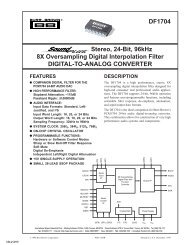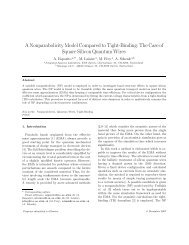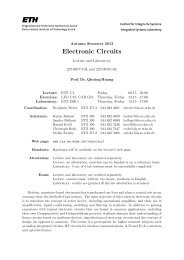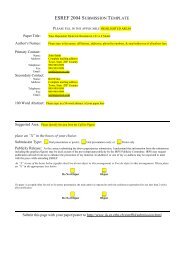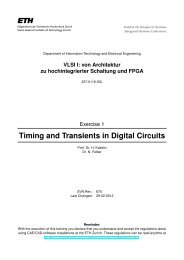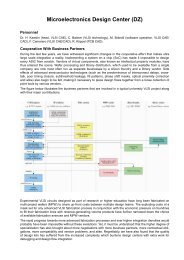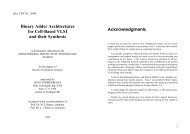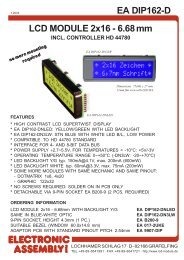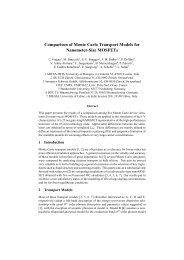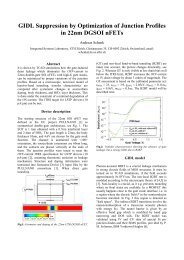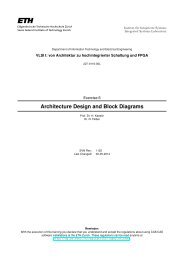SoC Encounter for Designers II - Integrated Systems Laboratory
SoC Encounter for Designers II - Integrated Systems Laboratory
SoC Encounter for Designers II - Integrated Systems Laboratory
Create successful ePaper yourself
Turn your PDF publications into a flip-book with our unique Google optimized e-Paper software.
Next we will add the core power rings that distribute power all around the core.Student Task 10:• Select the menu Power →Power Planning →Add Rings.... A large window will appear.The NET(S) field on the top defines <strong>for</strong> which nets rings will be created. The defaultis to create power VCC as well as ground GND rings.• In the RING CONFIGURATION section you can specify on what layers the ring segments willbe created. Select metal5 H <strong>for</strong> TOP and BOTTOM and metal6 V <strong>for</strong> LEFT and RIGHT.Specify WIDTH as 20 µm, SPACING as 1.5 µm and OFFSET as 4 µm and click OK.There are many alternative power distribution schemes that can be used. The one that we havechosen here is a very simple one. We have selected the upper metal layers Metal-5 and Metal-6<strong>for</strong> the ring, because in this technology Metal-6 is thicker and consequently has less parasiticresistance which is desirable <strong>for</strong> power distribution.For your own designs, you should per<strong>for</strong>m a power analysis (topic of Training 2) to find out the bestpower distribution approach that matches your design.The width has been chosen as 20 µm <strong>for</strong> convenience reasons. Basically the wider the power connection,the better. But as already mentioned earlier, in this technology, metal lines wider than 20 µmneed to be slotted (’stress relief slots’) which requires extra ef<strong>for</strong>t. As an alternative to slotting it isalso possible to create several smaller parallel rings, e.g. two VCC and two GND rings.20



